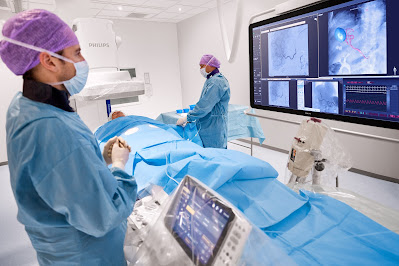Interventional Neurology Helps In Treating Conditions Like Stroke, Ischemic Stroke, And Multiple Sclerosis
 |
| Interventional Neurology |
Interventional neurologists use tools to access the central nervous system, which includes the brain and spinal cord. They use 3D technology and advanced radiology imaging to perform medical procedures in precise ways. A common Interventional Neurology procedure involves threading a catheter through a patient's groin artery to remove a blood clot. After the procedure, the blood flow to the brain resumes, and brain cells are no longer deprived of oxygen.
While interventional neurologists specialize in different disorders, they share the same fundamentals. They are trained in minimally invasive techniques and use a brain-computer interface (BCI) to treat a traumatic injury, motor neuron disease, and stroke. Interventional Neurology and other allied health care professionals are not the same, but training programs and institutions focusing on this field of medicine should emphasize the commonalities between them.
Cerebrovascular diseases are some of the most common neurological disorders and the most serious. They often have no warning signs, and they can suddenly develop into a life-threatening condition. Patients may experience significant physical and cognitive disability. These illnesses are often ischemic in nature and result in death or severe neurological disability. Some are the result of a cerebrovascular accident, while others are the result of a malformation or a brain tumor. The main purpose of an Interventional Neurology course is to train doctors in the various techniques used to treat such diseases.
An interventional neurologist has special training in the use of endovascular devices. These procedures may involve the use of catheters, radiology, and other technologies. Neurovascular procedures may be used to treat conditions like stroke, ischemic stroke, and multiple sclerosis. They may also be used to repair damaged nerves and treat chronic conditions. These procedures often include minimally invasive procedures. In many cases, patients see an interventional neuroradiologist when their primary care physician fails to treat their symptoms.
A subspecialty of neurology is Interventional Neurology. It uses radiography and catheters to detect and treat a variety of diseases and disorders of the central nervous system, including brain aneurysms, using minimally invasive neurosurgery techniques such coil embolization, embolectomy, stenting, and others. The central nervous system is made up of the brain and spinal cord. Interventional neurology employs instruments that flow into blood arteries rather than open surgery to diagnose and treat illnesses. Modern radiological imaging and 3D technologies are used by interventional neurologists to view bodily components for diagnosis and therapy.
The growth for neurovascular devices and Interventional Neurology is expanding as a result of factors including favourable medical reimbursement policies and the increase of individuals suffering from neurovascular illnesses worldwide.



Comments
Post a Comment